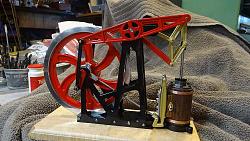Peaucellier-Lipkin linkage, the first planar linkage capable of transforming rotary motion into perfect straight-line motion.
Previously:
Rolling Ball Sculpture and Linkage Simulator
Shaft linkage design for oppositely-rotating shafts - GIF
Lever advancing ratchet mechanism - GIF
Linear oscillating to rotational motion gear design - GIF
Conjugate cams animation - GIF


 LinkBack URL
LinkBack URL About LinkBacks
About LinkBacks



 Reply With Quote
Reply With Quote




Bookmarks